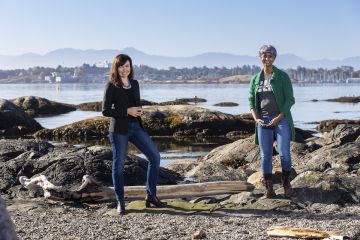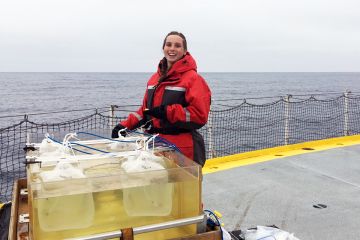Graduate Student Creates a Renewal Energy Plan for Race Rocks
The Race Rocks Marine Protected Area may be able to harness the power of the sea for its energy needs thanks to an alternative energy plan laid out in a UVic mechanical engineering student's master's thesis. Taco Niet examined energy demand at Race Rocks and potential energy availability from three renewable resources--sun, wind, and the tides. His model recommending tidal power breaks new ground.
"Tides arrive every six hours, every day, year round," says Niet. "They're reliable. This is an alternative energy parable." His proposal would free Race Rocks from its current dependency on diesel fuel to power its generator. Fuel delivery is by boat, and pumping diesel over such a rich, biodiverse area is risky.
Niet's model represents an advance, as it's one of the only models known to track energy production and demand on an hourly basis. "Most models use a large time scale, glossing over the amount of time when energy production is zero. Taco's model is also entirely self-contained--there are no traditional back-up systems in the model, making it especially relevant to small, isolated communities," says Dr. Ged McLean, the director of UVic's Institute for Integrated Energy Systems. It partnered with Garry Fletcher, the educational director of www.racerocks.com at the Lester B. Pearson College to examine alternative energy sources for Race Rocks, used by Pearson College students as part of their curriculum.
While Niet searches for an industrial partner who can make the tidal turbines a reality, McLean and his students continue to work with the Race Rocks "parable" as they model energy systems as large as the North American continent. "IESVic's goal is to understand what a realistic future looks like," McLean explains, "and how sustainable energy technology fits in that world."
-- 30 --
In this story
Keywords: graduate, student, creates, renewal, energy, plan, race, rocks




